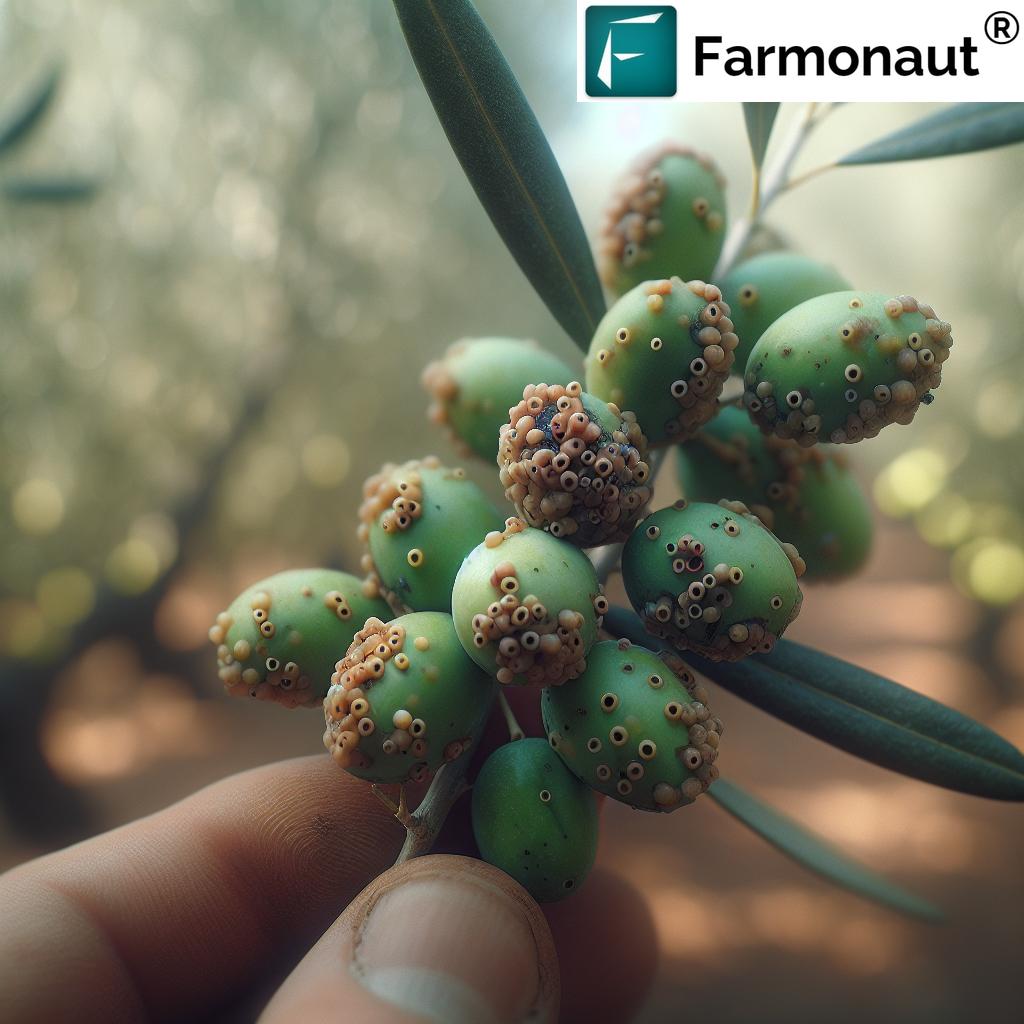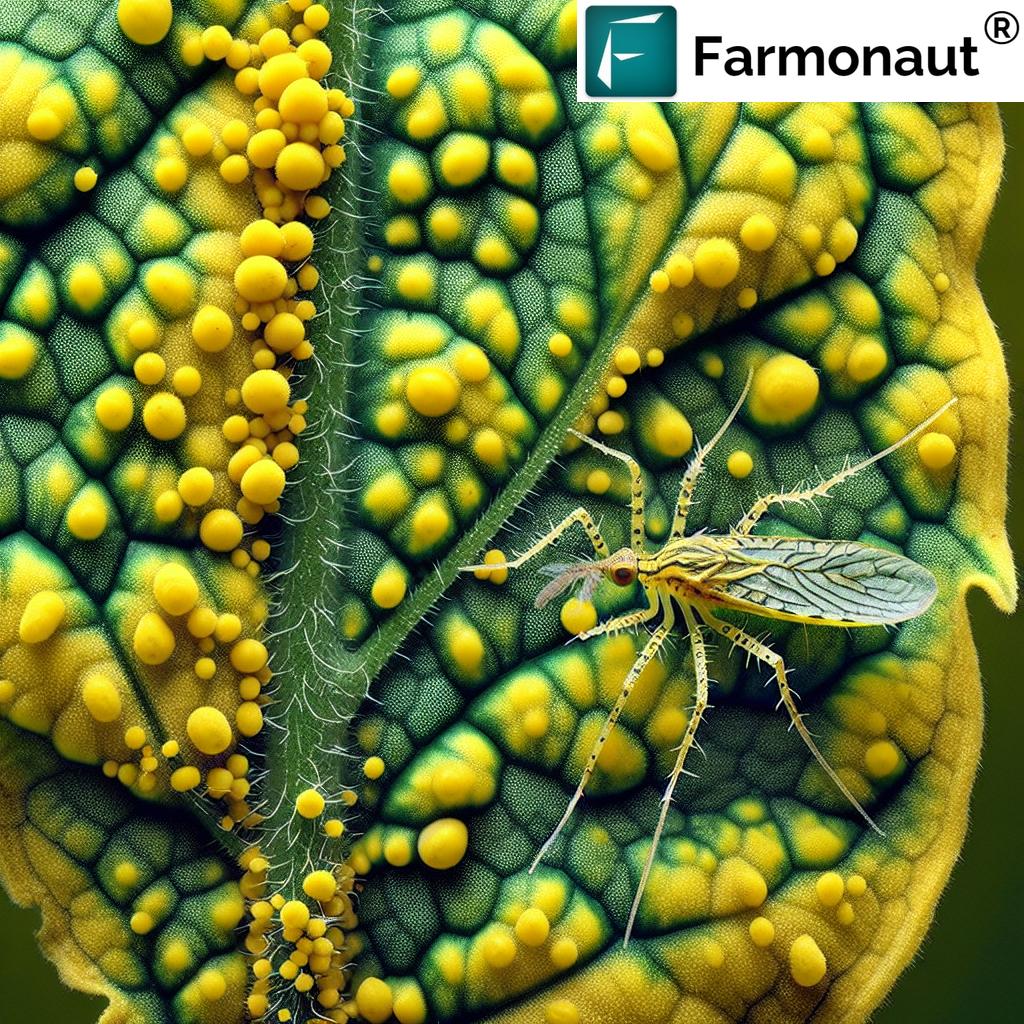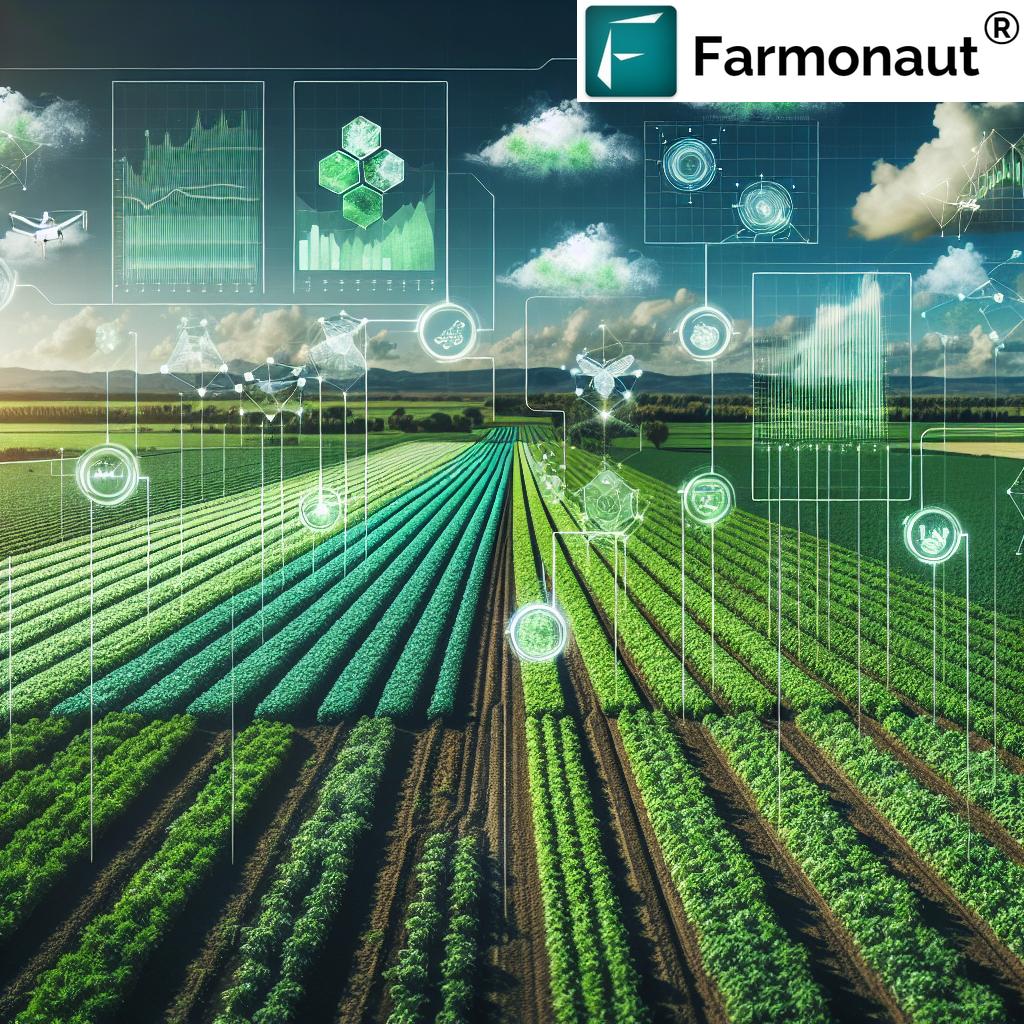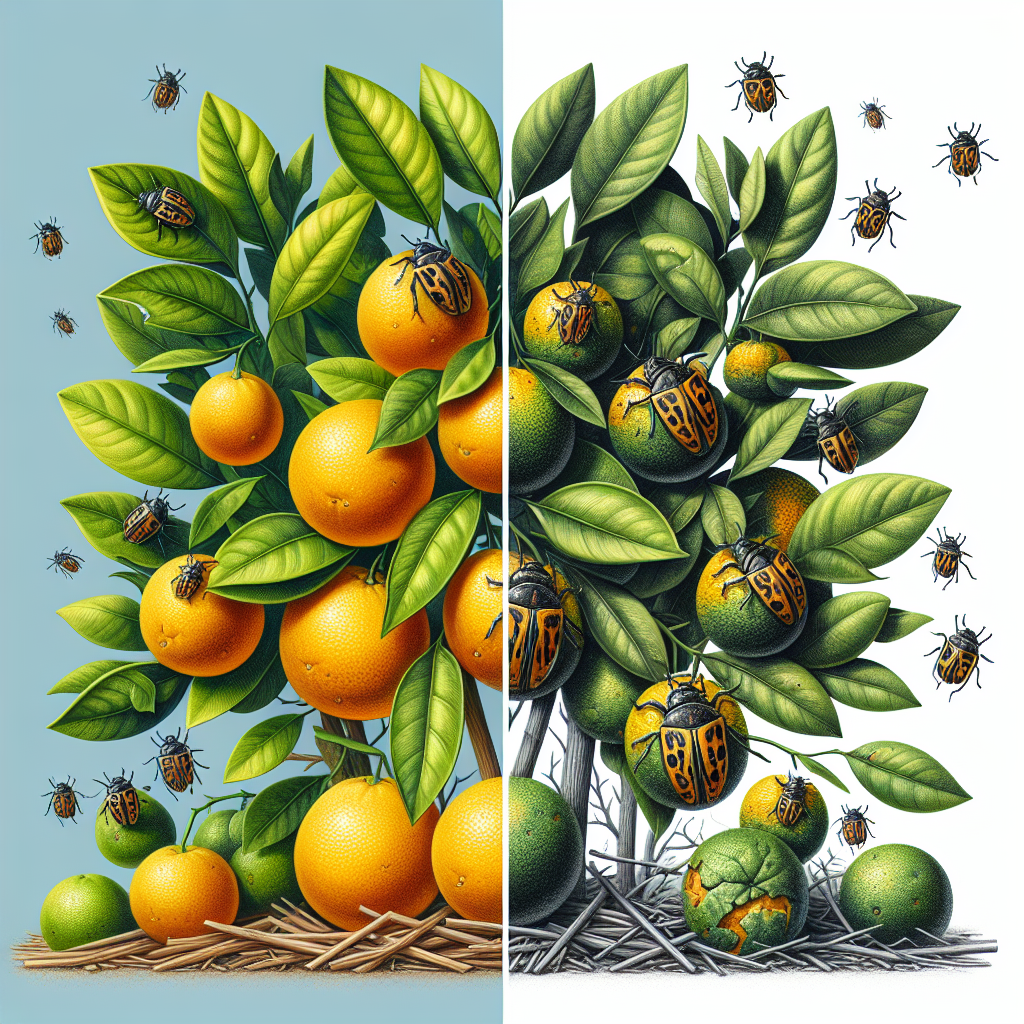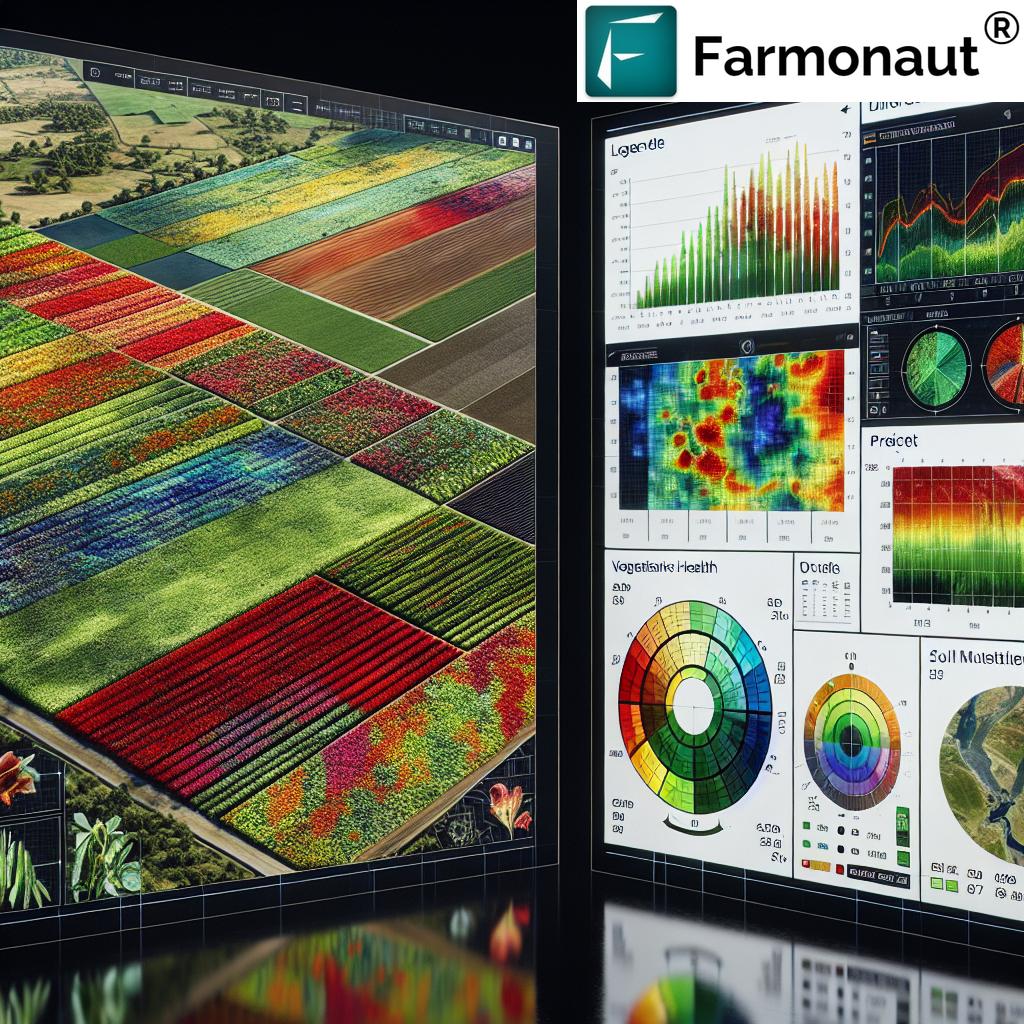Maximizing Crop Performance: Essential Spring Planting Tips and Precision Farming Technologies
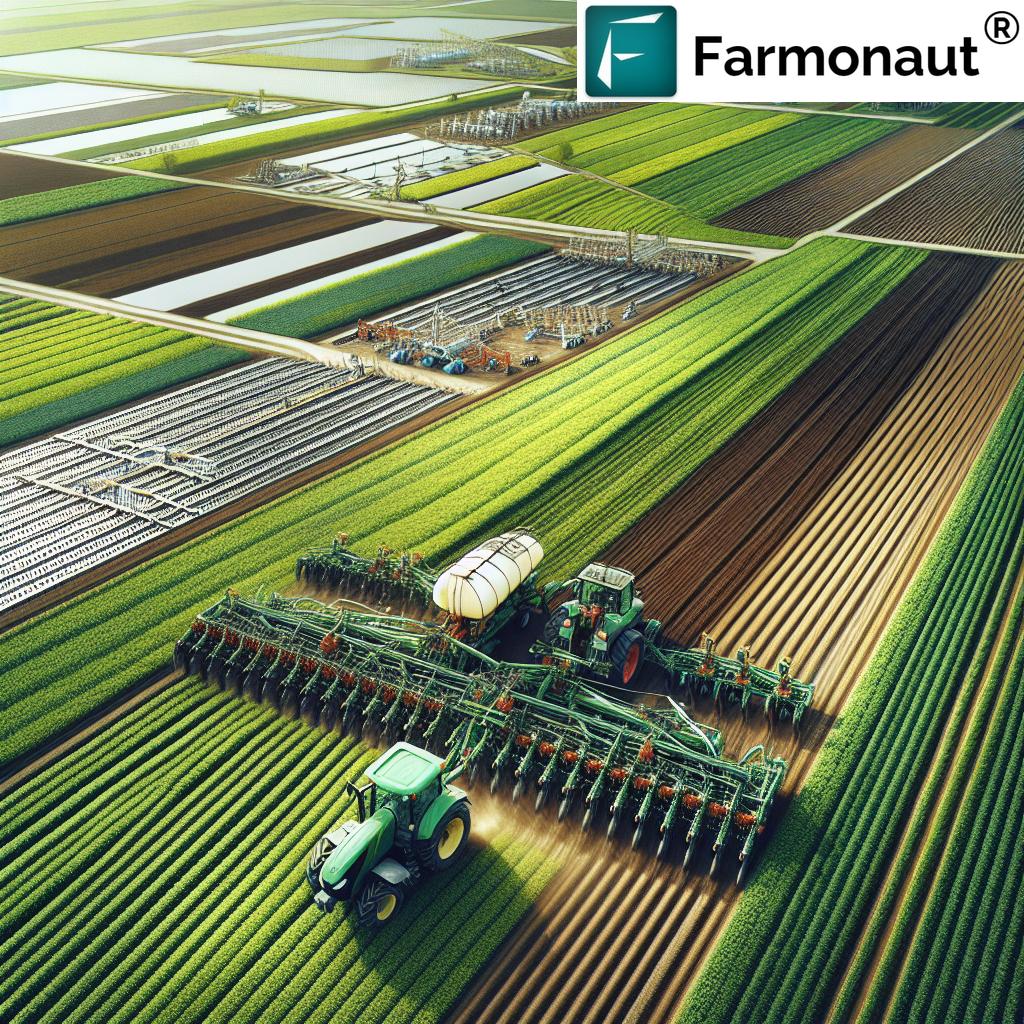
As we approach the spring planting season, farmers across the globe are gearing up for one of the most critical periods in the agricultural calendar. At Farmonaut, we understand the importance of this time and the challenges that come with it. In this comprehensive guide, we’ll explore essential spring planting tips, the latest in precision farming technologies, and how our satellite-based solutions can help optimize your crop performance.
The Importance of Proper Planning for Spring Planting
Successful crop production begins long before the first seed is sown. Proper planning is crucial to ensure a productive season. Here are some key aspects to consider:
- Analyzing soil health and fertility
- Selecting the right crop varieties for your region
- Preparing equipment and machinery
- Monitoring weather patterns and climate data
- Implementing pest and disease management strategies
By addressing these factors early, farmers can set themselves up for success and minimize potential setbacks during the growing season.
Preparing Your Fields for Planting
Field preparation is a critical step in ensuring optimal growing conditions for your crops. Here’s what you need to focus on:
Soil Analysis and Fertility Management
Understanding your soil’s composition and nutrient levels is essential for maximizing crop yield. We recommend conducting thorough soil tests to determine:
- pH levels
- Organic matter content
- Nutrient deficiencies or excesses
- Soil structure and texture
Based on these results, you can develop a targeted fertility management plan, including the appropriate use of fertilizers and soil amendments.
Tillage and Residue Management
Proper tillage practices can help improve soil structure, reduce erosion, and create an ideal seedbed for planting. Consider the following:
- Conservation tillage methods to preserve soil moisture and organic matter
- Managing crop residues to improve soil health and reduce pest pressure
- Leveling fields to ensure even water distribution and prevent waterlogging
Drainage and Irrigation Systems
Ensuring proper water management is crucial for crop success. Before planting, inspect and maintain your drainage and irrigation systems:
- Clear drainage ditches and tiles of debris
- Check irrigation equipment for leaks or damage
- Calibrate irrigation systems for efficient water use
Equipment Maintenance and Preparation
Well-maintained farm equipment is essential for efficient planting operations. Here’s a comprehensive checklist to ensure your machinery is ready for the season:
Tractor Maintenance
- Change oil and filters
- Check and top up all fluid levels
- Inspect and replace worn belts and hoses
- Test the battery and electrical system
- Grease all fittings and zerks
- Check tire pressure and condition
- Inspect lights, mirrors, and safety equipment
Planter Preparation
- Clean and inspect all components
- Check and replace worn disc blades and openers
- Calibrate seed meters and monitors
- Inspect and adjust row units
- Lubricate all moving parts
- Test and calibrate fertilizer and chemical applicators
- Ensure proper seed tube alignment
Sprayer Maintenance
- Clean tanks, lines, and nozzles thoroughly
- Calibrate spray systems for accurate application
- Check and replace worn nozzles
- Inspect pumps and pressure regulators
- Test boom folding mechanisms
Remember to keep a well-stocked supply of spare parts, including hoses, fittings, bolts, and bearings, to address any unexpected issues during the planting season.
Leveraging Precision Farming Technologies
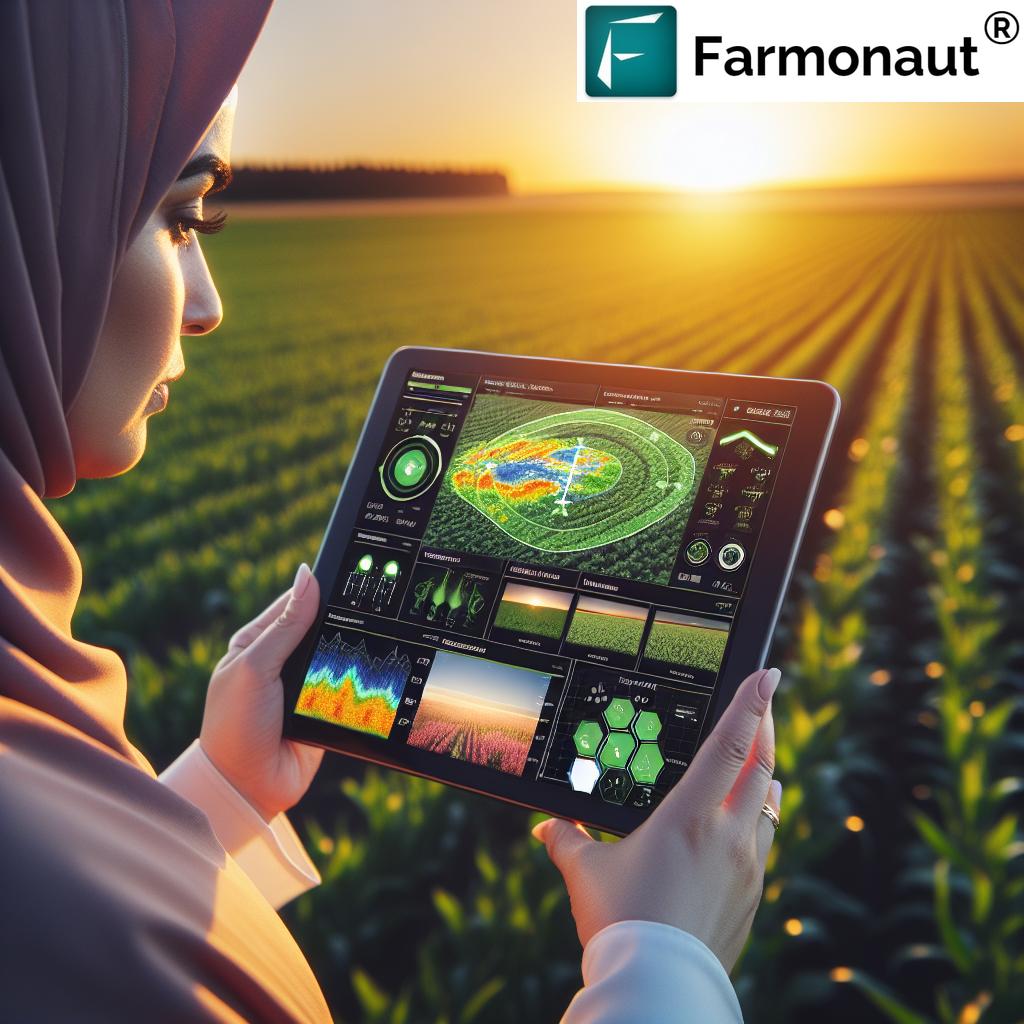
In today’s agricultural landscape, precision farming technologies play a crucial role in optimizing crop performance and resource utilization. At Farmonaut, we’re at the forefront of these innovations, offering satellite-based solutions that provide valuable insights for informed decision-making.
Satellite-Based Crop Monitoring
Our advanced satellite imagery technology allows farmers to monitor crop health and field conditions in real-time. Benefits include:
- Early detection of pest and disease outbreaks
- Identification of nutrient deficiencies
- Monitoring of crop growth stages
- Assessment of water stress and irrigation needs
By leveraging this technology, farmers can make timely interventions to address issues before they impact yield potential.
Variable Rate Technology
Variable rate application of inputs such as seeds, fertilizers, and pesticides can significantly improve efficiency and reduce costs. Our satellite data, combined with soil mapping and yield history, enables the creation of precise prescription maps for:
- Seed planting rates
- Fertilizer application
- Pesticide and herbicide treatments
This targeted approach ensures that resources are used efficiently, maximizing return on investment while minimizing environmental impact.
Data Visualization and Analysis
Our platform provides powerful data visualization tools that transform complex field data into actionable insights. Farmers can easily interpret:
- Vegetation index maps (e.g., NDVI)
- Soil moisture maps
- Yield potential forecasts
- Historical performance trends
These visual representations help in identifying field variability and making informed management decisions throughout the growing season.
Integrating Precision Technologies
To maximize the benefits of precision farming, it’s essential to integrate various technologies and data sources. Our platform allows for seamless connectivity between:
- GPS-guided equipment
- Weather stations
- Soil sensors
- Farm management software
This integration creates a comprehensive digital farming ecosystem that supports data-driven decision-making at every stage of crop production.
Comparison: Traditional Farming vs. Farmonaut Satellite System
| Aspect | Traditional Farming | Farmonaut System |
|---|---|---|
| Field Monitoring | Manual scouting, time-consuming and limited coverage | Real-time satellite imagery, comprehensive field coverage |
| Crop Health Analysis | Visual inspection, subjective assessment | Advanced vegetation indices, objective data-driven analysis |
| Input Optimization | Uniform application based on general recommendations | Variable rate prescriptions based on field variability |
| Data Visualization | Limited, often paper-based records | Interactive digital maps and dashboards |
| Decision Support | Relies heavily on experience and intuition | AI-powered insights and recommendations |
Implementing Sustainable Farming Practices
As stewards of the land, it’s our responsibility to implement sustainable farming practices that protect the environment while ensuring long-term productivity. Here are some key strategies to consider:
Conservation Tillage
Reducing tillage operations can help preserve soil structure, increase organic matter content, and improve water retention. Consider practices such as:
- No-till planting
- Strip-till systems
- Mulch tillage
Cover Cropping
Incorporating cover crops into your rotation can provide numerous benefits, including:
- Improved soil health and structure
- Reduced erosion and nutrient leaching
- Enhanced pest and weed suppression
- Increased biodiversity
Integrated Pest Management (IPM)
Implementing IPM strategies can help reduce reliance on chemical pesticides while effectively managing pest populations. Key components include:
- Regular field scouting and monitoring
- Use of biological control agents
- Cultural practices to disrupt pest life cycles
- Targeted application of pesticides only when necessary
Precision Nutrient Management
Optimizing nutrient applications based on crop needs and soil conditions can improve efficiency and reduce environmental impact. Consider:
- Split applications of fertilizers
- Use of slow-release fertilizer formulations
- Incorporation of organic amendments
- Precision application technologies
Adapting to Climate Change and Weather Variability
Climate change presents significant challenges for agriculture, requiring farmers to adapt their practices to ensure resilience and productivity. Here are some strategies to consider:
Diversifying Crop Rotations
Incorporating a diverse range of crops in your rotation can help:
- Spread risk across different crop types
- Improve soil health and fertility
- Reduce pest and disease pressure
- Enhance overall farm resilience
Implementing Water Conservation Measures
Efficient water management is crucial in the face of changing precipitation patterns. Consider:
- Installing drip irrigation systems
- Implementing deficit irrigation strategies
- Capturing and storing rainwater
- Using drought-tolerant crop varieties
Utilizing Climate-Smart Technologies
Leveraging advanced technologies can help farmers make informed decisions in response to changing weather patterns. Our satellite-based solutions provide:
- Accurate weather forecasts and alerts
- Historical climate data analysis
- Crop-specific climate risk assessments
- Recommendations for climate-adaptive practices
Staying Informed and Connected
In the rapidly evolving world of agriculture, staying informed about the latest research, technologies, and best practices is crucial. Here are some ways to stay connected and continue learning:
Educational Resources
- Attend agricultural conferences and workshops
- Participate in webinars and online courses
- Subscribe to industry publications and newsletters
- Join local farmer organizations and cooperatives
Digital Connectivity
Embrace digital tools to enhance your farming operations and stay connected:
- Utilize farm management apps for record-keeping and planning
- Engage with online farming communities and forums
- Follow agricultural experts and organizations on social media
- Explore precision agriculture platforms like Farmonaut
Collaboration and Knowledge Sharing
Fostering connections with other farmers and industry professionals can provide valuable insights and support:
- Participate in farmer-to-farmer mentoring programs
- Attend field days and on-farm demonstrations
- Collaborate on research projects with local universities
- Share your own experiences and lessons learned with others
Farmonaut: Your Partner in Precision Agriculture
At Farmonaut, we’re committed to empowering farmers with cutting-edge technology and data-driven insights. Our satellite-based solutions offer:
- Real-time crop health monitoring
- AI-powered advisory services
- Weather forecasting and historical analysis
- Variable rate prescription generation
- Farm management tools and reporting
To learn more about how Farmonaut can help optimize your farming operations, visit our website or download our mobile app:
For developers interested in integrating our satellite and weather data into their own applications, check out our API documentation:
Conclusion
As we enter the spring planting season, the combination of proper planning, equipment maintenance, and leveraging precision farming technologies can set the stage for a successful and productive year. By embracing sustainable practices and staying informed about the latest agricultural innovations, farmers can adapt to changing conditions and optimize their crop performance.
At Farmonaut, we’re dedicated to supporting farmers in their journey towards more efficient, sustainable, and profitable agriculture. Our satellite-based solutions provide the tools and insights needed to make informed decisions throughout the growing season.
We encourage you to explore our platform and see how it can benefit your farming operations. Together, we can cultivate a more resilient and productive agricultural future.
Frequently Asked Questions (FAQ)
1. What is the best time to start spring planting?
The ideal planting time varies depending on your location, crop type, and local climate conditions. Generally, spring planting begins when soil temperatures consistently reach above 50°F (10°C) and the risk of frost has passed. Consult local extension services or use our climate data tools for specific recommendations in your area.
2. How can satellite imagery help improve crop yields?
Satellite imagery provides valuable insights into crop health, soil moisture, and field variability. This information allows farmers to identify and address issues early, optimize input applications, and make data-driven decisions that can significantly improve crop yields and resource efficiency.
3. What are the benefits of variable rate technology?
Variable rate technology enables precise application of inputs such as seeds, fertilizers, and pesticides based on field variability. This targeted approach can lead to improved crop performance, reduced input costs, and minimized environmental impact.
4. How often should I perform maintenance on my farm equipment?
Regular maintenance should be performed according to the manufacturer’s recommendations, typically before and after each growing season. Daily inspections during periods of heavy use are also crucial to catch and address any issues promptly.
5. What steps can I take to improve soil health?
To improve soil health, consider implementing practices such as crop rotation, cover cropping, reduced tillage, and incorporating organic matter. Regular soil testing and targeted nutrient management are also essential for maintaining optimal soil conditions.
6. How can I protect my crops from extreme weather events?
Strategies to protect crops from extreme weather include diversifying crop varieties, implementing irrigation and drainage systems, using protective structures like hoop houses, and staying informed about weather forecasts to take preventive actions when necessary.
7. What are some sustainable pest management practices?
Sustainable pest management involves implementing Integrated Pest Management (IPM) strategies, such as crop rotation, biological control, cultural practices, and targeted pesticide use only when necessary. Regular monitoring and early detection are key to effective pest management.
8. How can I get started with precision agriculture?
To get started with precision agriculture, begin by assessing your current practices and identifying areas for improvement. Invest in basic technologies like GPS-guided equipment and explore data collection tools such as soil sensors or satellite imagery services like Farmonaut. Start small and gradually expand your use of precision technologies as you become more comfortable with the systems.
9. What are the key factors to consider when selecting crop varieties?
When selecting crop varieties, consider factors such as local climate conditions, soil type, disease resistance, yield potential, market demand, and compatibility with your farming practices. Consult with local agronomists or extension services for variety recommendations specific to your region.
10. How can I stay updated on the latest agricultural research and technologies?
Stay informed by attending agricultural conferences, participating in webinars, subscribing to industry publications, and engaging with online farming communities. Follow reputable agricultural organizations and researchers on social media, and consider joining local farmer groups or cooperatives for networking and knowledge sharing.




